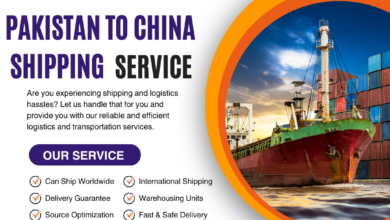Enterprise Application Integration: Streamlining Business Processes for Efficiency and Agility

In today’s interconnected digital landscape, enterprises rely on a multitude of software applications to manage various aspects of their operations. However, these applications often operate in silos, leading to inefficiencies, data duplication, and disjointed processes. Enterprise Application Integration (EAI) addresses these challenges by enabling seamless communication and data exchange between disparate systems. This article explores the significance of EAI, its methodologies, benefits, challenges, implementation strategies, and future trends, providing a comprehensive guide for organizations aiming to optimize their IT infrastructure and enhance operational efficiency.
1. Introduction to Enterprise Application Integration (EAI)
Enterprise Application Integration (EAI) refers to the process of connecting and integrating different applications, systems, and data sources within an enterprise to streamline business processes and facilitate real-time data exchange. The goal of EAI is to create a unified and cohesive IT environment that enables seamless communication and collaboration across departments and functions.
1.1 Evolution and Importance
The need for EAI has grown significantly with the proliferation of diverse applications and systems across organizations:
- Legacy Systems Integration: Connecting older, often proprietary systems with modern applications and cloud services.
- Business Process Optimization: Automating workflows and eliminating manual data entry and reconciliation.
- Real-Time Decision Making: Enabling timely access to accurate data for informed decision-making.
1.2 Key Objectives of Enterprise Application Integration
- Data Consistency: Ensuring that data across systems is accurate, consistent, and up-to-date.
- Process Efficiency: Streamlining workflows and reducing redundancy in tasks and operations.
- Improved Customer Experience: Enhancing service delivery and responsiveness through integrated systems.
2. Methods and Technologies for Enterprise Application Integration
Enterprise Application Integration employs various methodologies and technologies to facilitate seamless communication and data exchange between applications and systems:
2.1 Messaging Systems
- Message Queues: Facilitating asynchronous communication between applications, ensuring reliable message delivery.
- Enterprise Service Bus (ESB): Acting as a central communication hub for integrating multiple applications and services.
2.2 Application Programming Interfaces (APIs)
- RESTful APIs: Enabling lightweight and scalable integration between web-based applications.
- SOAP APIs: Supporting XML-based messaging protocols for secure and standardized data exchange.
2.3 Data Integration
- Extract, Transform, Load (ETL): Extracting data from various sources, transforming it to fit operational needs, and loading it into a target database.
- Data Virtualization: Providing a unified view of data across disparate sources without physically moving data.
2.4 Business Process Management (BPM)
- Workflow Automation: Orchestrating and automating business processes across integrated systems.
- Business Rules Engine: Implementing rules and policies to govern data flow and decision-making within integrated systems.
3. Benefits of Enterprise Application Integration
Implementing EAI offers numerous benefits that directly impact organizational efficiency, agility, and competitiveness:
3.1 Operational Efficiency
- Streamlined Processes: Automating workflows and reducing manual intervention.
- Faster Response Times: Enabling real-time data access and decision-making.
3.2 Improved Data Quality and Consistency
- Data Accuracy: Ensuring data integrity across integrated systems.
- Single Source of Truth: Providing a unified view of data for reporting and analytics.
3.3 Enhanced Customer Experience
- Personalized Services: Accessing comprehensive customer data for tailored service delivery.
- Faster Issue Resolution: Resolving customer queries and issues more efficiently through integrated systems.
3.4 Cost Savings
- Reduced IT Complexity: Minimizing maintenance costs associated with managing disparate systems.
- Resource Optimization: Efficient utilization of IT resources and infrastructure.
4. Challenges in Enterprise Application Integration
While EAI offers significant advantages, organizations face several challenges when implementing and managing integrated systems:
4.1 Complexity of Integration
- Diverse Technologies: Integrating systems with different architectures, data formats, and protocols.
- Legacy Systems: Overcoming compatibility issues and ensuring seamless integration with older systems.
4.2 Security and Compliance
- Data Protection: Implementing robust security measures to protect sensitive data during transmission and storage.
- Regulatory Compliance: Adhering to industry regulations and standards (e.g., GDPR, HIPAA) for data privacy and security.
4.3 Scalability and Performance
- Load Balancing: Optimizing system performance to handle increasing data volumes and user transactions.
- Latency: Minimizing delays in data processing and response times across integrated systems.
4.4 Change Management and Cultural Shift
- Organizational Resistance: Overcoming resistance to change and fostering a culture of collaboration and transparency.
- Skill Gaps: Addressing the need for specialized skills in integration technologies and methodologies.
5. Implementation Strategies for Enterprise Application Integration
Successful implementation of EAI requires a structured approach tailored to the organization’s specific needs and objectives:
5.1 Strategic Planning and Assessment
- Business Alignment: Aligning integration goals with overall business objectives and priorities.
- Technology Evaluation: Assessing existing IT infrastructure and identifying suitable integration tools and platforms.
5.2 Phased Approach to Integration
- Incremental Deployment: Prioritizing integration projects based on business impact and complexity.
- Pilot Projects: Testing integration solutions in controlled environments before full-scale deployment.
5.3 Collaboration and Stakeholder Engagement
- Cross-functional Teams: Involving IT, business units, and external partners in planning and execution phases.
- Executive Sponsorship: Securing leadership support and advocacy for integration initiatives.
5.4 Continuous Monitoring and Optimization
- Performance Metrics: Establishing KPIs to monitor integration success, performance, and ROI.
- Iterative Improvement: Iteratively optimizing integration processes based on feedback and evolving business needs.
6. Future Trends in Enterprise Application Integration
Looking ahead, several trends are shaping the future of EAI and influencing how organizations approach integration challenges:
6.1 Cloud-Native Integration
- Serverless Computing: Leveraging serverless architectures for scalable and cost-effective integration solutions.
- Cloud APIs: Integrating with cloud-based APIs and services for seamless data exchange and interoperability.
6.2 AI and Machine Learning in Integration
- Predictive Analytics: Using AI algorithms to predict integration patterns and optimize data flows.
- Automated Data Mapping: Automating the mapping of data fields and schemas between integrated systems.
6.3 Event-Driven Architecture (EDA)
- Real-Time Integration: Facilitating event-driven data processing and decision-making across integrated systems.
- Microservices Architecture: Adopting microservices for modular and independent integration components.
6.4 Blockchain Technology
- Decentralized Integration: Exploring blockchain for secure and transparent data exchange and transaction processing.
- Smart Contracts: Automating contract execution and enforcement within integrated systems.

7. Conclusion
Enterprise Application Integration plays a pivotal role in enabling organizations to harness the full potential of their IT infrastructure, streamline operations, and drive digital transformation. By breaking down silos and fostering seamless communication between disparate systems, EAI empowers businesses to achieve greater agility, efficiency, and innovation.
In conclusion, as organizations continue to evolve and adapt to changing market dynamics, the role of EAI will remain critical in supporting strategic initiatives, enhancing customer experiences, and maintaining competitive advantage. By embracing advanced integration technologies and best practices, enterprises can navigate complexity, leverage data-driven insights, and unlock new opportunities for growth and success in an increasingly interconnected world.



